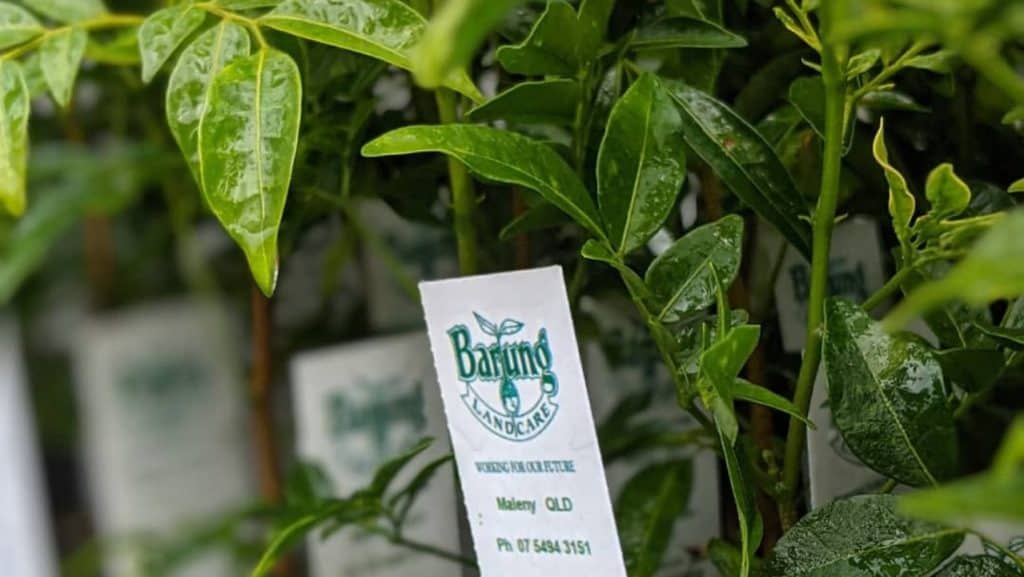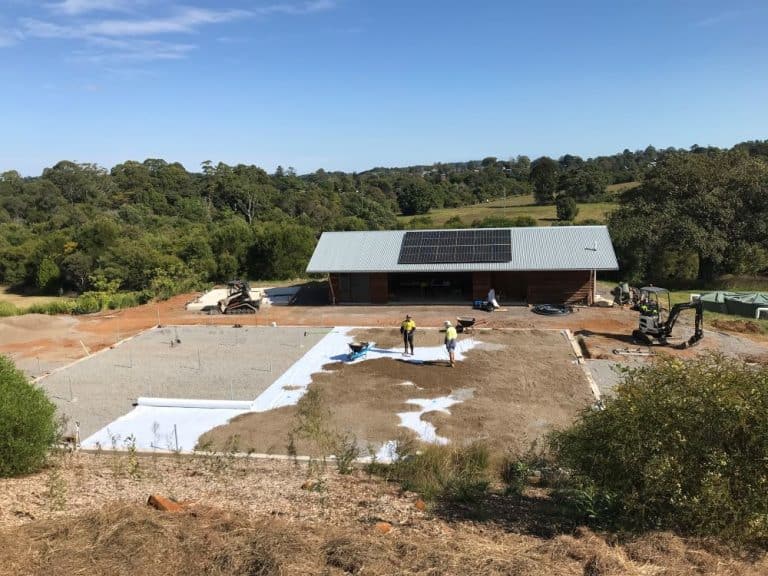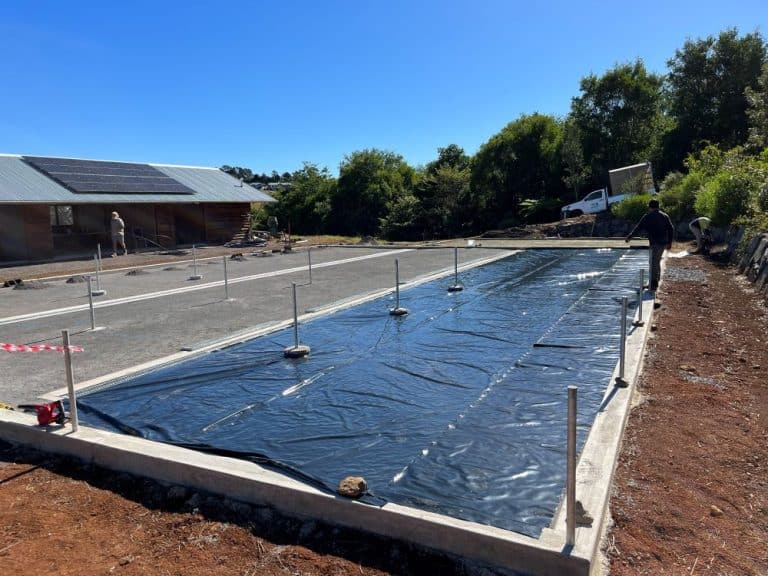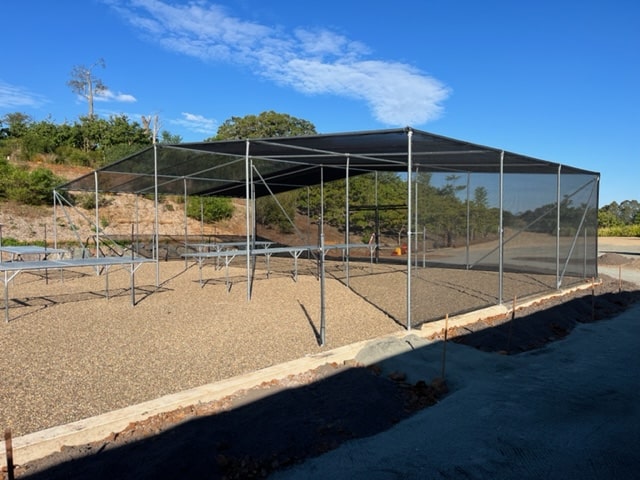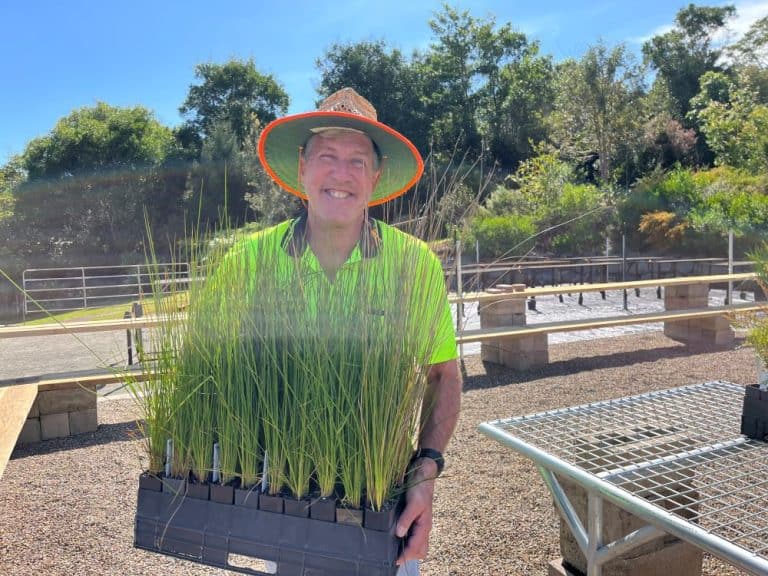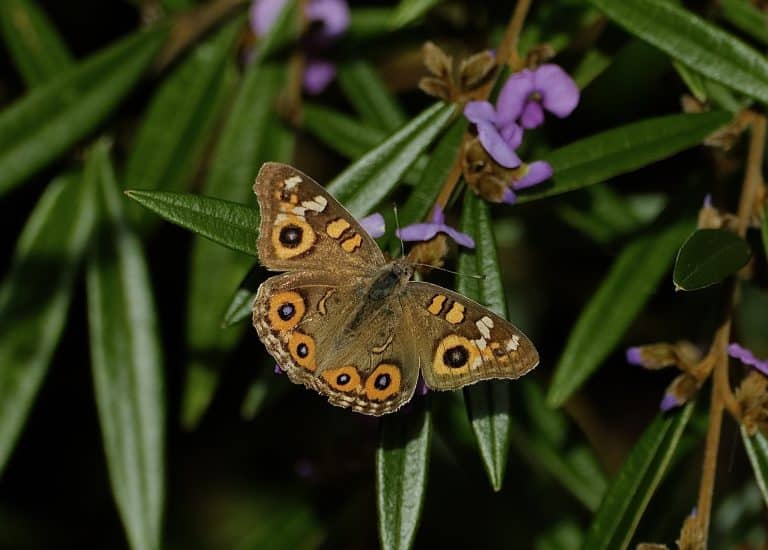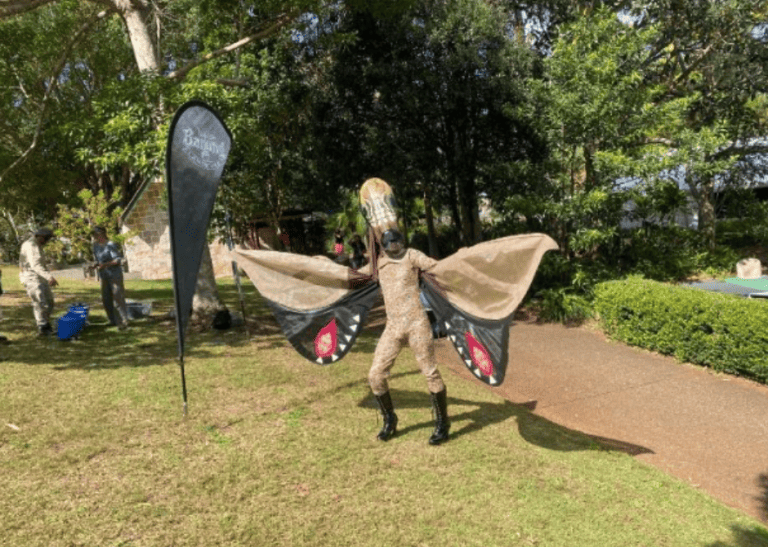We have moved!
The Nursery team and our dedicated volunteers have had a busy season moving our retail nursery operations from Porters Lane to the new Nature Centre on Parklands Drive, North Maleny.
In 2009 the Barung Community Nursery moved from Bicentennial Lane in the heart of Maleny to a “temporary” site on Porters Lane at North Maleny. Over the next 11 years, the team was teased with a few potential new locations, but it wasn’t until 2020 that the Sunshine Coast Council finally handed over the location of our new forever home. While we started to plant up the site later that year it has taken almost another three years to build, set-up and finally open the new nursery to the public.
Turns out moving a nursery is a huge job! After months of planning, the action finally ramped up during Winter. Over several weeks in July, August and September the team set-up the main nursery pad to recycle water, built a grow-on pad, set-up irrigation, landscaped the surroundings, built storage in the potting shed, built a fence, set-up the office/sales area, moved all the plants down and completed seemingly endless other small tasks before finally opening the gates to our eager and encouraging entourage of members!
While much of this work was carried out and overseen by Barung staff, this whole process simply would not have been possible without our Conservation and Ecosystem Management trainees and especially our dedicated community of volunteers. A huge thank you to everyone involved in making this happen.
We couldn’t be happier to finally be at our new home in the Maleny Community Precinct and look forward to welcoming you and having the community engage with the site over the coming years. Exciting times ahead!
You can visit the new nursery on Parklands Drive (via Porters Lane) North Maleny (opposite Maleny Sport and Recreation)

Gardens for Wildlife update
by Trevour Pitt
In the spring of 2020, Cam Burton, Barung’s nursery manager, drew up plans for what would become the Barung Garden for Wildlife. Located in the Maleny Community Precinct, an area once rich in biodiverse sub-tropical rainforest, the garden adjoins Barung’s new community nursery. The planting would largely follow the original vegetation type, apart from a section comprising scleropyll understorey species with large swaths of native grasses. This section is important, as it showcases a broad range of species that habitat gardeners can use in smaller spaces to improve biodiversity in urban areas.
The rainforest area predominantly uses a dense, pioneer heavy planting method with a thick layer of mulch. This method of planting has meant that after the first year of growth, very little maintenance is required and chemical use has been kept to a minimum. We have also planted some sections with a more traditional wider spacing and less pioneer heavy style to contrast the two methods.
The planting commenced in November 2020 with one of our groups of Conservation and Land Management trainees on the upper rainforest section. To date, around 2000 plants have gone in the ground, with many more to come, and have all been planted and maintained by our trainee groups and volunteers. The trainee groups have a special connection to the site and many participants from previous groups visit regularly to spend time in the garden.

Rainforest Resilience update
by Cameron Burton
Our rainforest resilience project aims to restore and protect rainforests in our region. A major focus of the project is to extend and improve habitat for the Southern Pink Underwing Moth (Phyllodes imperialis subsp. smithersi) which is an endangered species restricted to subtropical rainforest in Northern New South Wales and South East Queensland. This species is highly vulnerable to the impacts of climate change, invasive species, fragmentation and fire.
What our Rainforest Resilience project aims to do:
- Increase rainforest vegetation
- Work with key scientists and researchers on threatened species recovery with a focus on the Southern Pink Underwing Moth
- Support landholders with skills and knowledge to build rainforest resilience on their properties and provide ideal habitat for the Southern Pink Underwing Moth
- Supply landholders with appropriate plants for revegetation activities
- Continue to work together as a community to restore and protect rainforest vegetation across the Sunshine Coast Hinterland
Spring 2023 update on what is happening in the Rainforest Resilience space:
- Saving Native Species grant
- Landholder conservation project – Fryers Creek
- Rangebow Festival – celebrating the Southern Pink Underwing Moth

Saving Native Species grant
The federal government has begun a round of grants under the Saving Native Species Program.
The Saving Native Species (priority species) grants will support projects that improve trajectories for priority species identified in the Threatened Species Action Plan: Towards Zero Extinctions 2022-2032.
The Saving Native Species Program is providing a total of $224.5 million over 4 years to support the recovery of our unique plants, animals and landscapes.
With this funding opportunity our approach was to partner with other not for profit and social enterprise organisations in a joint submission that focuses on the recovery of the Southern Pink Underwing Moth. Partner groups include field practitioners, nurseries, researchers and educators.
We hope we can build on the success of the Landcare Led Bushfire recovery grant won by Barung in 2020 and continue working on the conservation efforts of this species.
Below is a part of the project description in the application:
“The project is a critical initiative focused on conserving the endangered Southern Pink Underwing moth (SPUM) and restoring its natural habitat across its known range in southeast Queensland. This multifaceted project employs a comprehensive three-fold approach, aiming to bring together and empower key stakeholders and working groups, demonstrate effective habitat restoration techniques on a total of up to 38 properties, and engage in robust monitoring surveys and dissemination of results and resources to ensure the long-term survival of this vulnerable species through a collaborative knowledge-base”.

A magnificent Watergum growing on Fryers Creek
Fryers Creek and the Southern Pink Underwing Moth
Recently we have been working with some new Barung members on their Maleny property located alongside a section of Mary Cairncross reserve. The owners have a strong interest in conservation and are committed to enhancing existing habitat. They have funded a one hectare revegetation project and Barung was able to contribute 400 extra tubes to this project from a financial donation received through our Rainforest Resilience program.
In approx. 2017 the previous property owners had established a planting of about half a hectare. However the planting was quite sparse and grass still dominated the understory and required regular mowing. Our planting method was to mulch the ground thickly and interplant through the existing planting with fast growing mature phase rainforest trees such as Red Cedar and Bumby Ash and pioneers including Bleeding Heart and Pencil Cedar. With this method we expect to close the canopy quickly to create deeper shade. Once there is sufficient shade our next step is to plant out the area with some precious Carronia Vine seedlings which are the host plant for the SPUM.
Rangebow Festival and Community Planting
The Rangebow Festival and Barung have been collaborating to help promote awareness in pursuit of the survival of the endangered Southern Pink Underwing Moth. The festival uses images of the endangered moth in its marketing and also created a wonderful costume to visually emulate the moth and caterpillar. Promoting inclusion and conservation!!
The 2023 festival included a positive collaboration with Barung Landcare and the Russell Family Park Bushcare Group, led by Eric Anderson and Dianna O’Conner, with festival goers planting almost 500 trees (400 donated by Barung) in a revegetation area of the park.
The planting was quite diverse, containing 59 species in the donation of 400 plants by Barung and which included 5 Carronia vines.
Ninety two people signed on for the planting and all seemed to enjoy the experience!

